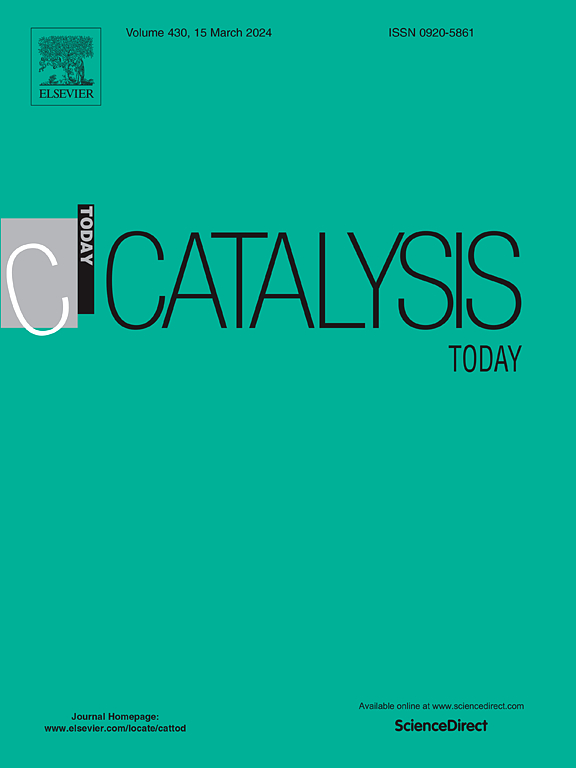纳米氧化铝对聚乙烯醇/稻壳灰纳米复合膜性能及应用的影响
IF 5.2
2区 化学
Q1 CHEMISTRY, APPLIED
引用次数: 0
摘要
采用溶胶-凝胶法制备了聚乙烯醇(PVA)/稻壳灰(RHA)/纳米氧化铝(NAL)复合材料,RHA质量分数分别为5、10、15、20和25 wt%, NAL质量分数为2 wt%。以戊二醛(GLA)和十二烷基硫酸钠(SDS)分别作为交联剂和表面活性剂。观察了RHA和NAL对复合材料热、力学和化学性能的影响。采用紫外可见光谱(UV-vis)、傅里叶变换红外光谱(FTIR)、x射线衍射(XRD)和扫描电镜(SEM)对复合材料进行了表征。紫外可见性研究估计了复合材料的紫外屏障保护作用。FTIR光谱显示了PVA及其复合材料内部的物理化学键合。XRD分析估计薄膜中存在晶态和非晶态相。SEM图像显示PVA, RHA和NAL之间具有良好的相容性,以确保GLA和SDS对复合材料的影响。与纯PVA相比,PVA/RHA/NAL复合材料的溶胀度(DS)、溶解度(S)和断裂伸长率(E%)分别降低了72.71 %、75.84 %和96.87 %,拉伸强度(TS)和杨氏模量(YM)分别提高了32.84 %和1352.07 %。与原PVA膜相比,PVA/RHA/NAL复合膜的水蒸气透过率(WVTR)和含水率(MC)分别降低了46.82 %和36.54 %。热重分析(TGA)也证实了PVA/RHA/NAL复合材料比PVA/RHA复合材料和原PVA膜具有更高的热稳定性。PVA/RHA复合材料的生物降解率显著提高,在120天内达到38% %。该复合材料用于食品保鲜,提高了番石榴的保质期,并将其用于食品包装。本文章由计算机程序翻译,如有差异,请以英文原文为准。
Effect of nano alumina on the poly (vinyl alcohol)/rice husk ash nanocomposite films – properties and application
Poly (vinyl alcohol) (PVA)/Rice husk ash (RHA)/nano alumina (NAL) composites were synthesized with 5, 10, 15, 20, and 25 wt% of RHA and 2 wt% of NAL by sol-gel process. Glutaraldehyde (GLA) and sodium dodecyl sulfate (SDS) were used as crosslinking agents and surfactants, respectively. RHA and NAL's effects on the composite's thermal, mechanical, and chemical properties were observed. UV–vis spectral study, Fourier transform infrared (FTIR) analysis, X-ray diffraction (XRD) and scanning electron microscopy (SEM) were used to characterize the composites. UV–vis study estimates the UV barrier protection of the composite. FTIR spectra exhibit the physical and chemical bonding inside the PVA and its composite. XRD analysis estimates the crystalline and amorphous phases present in the film. SEM images show excellent compatibility between PVA, RHA, and NAL to ensure the influence of GLA and SDS on the composite. Degree of swelling (DS) solubility (S) and percentage of elongation at break (E%) were diminished by 72.71 %, 75.84 %, and 96.87 %, respectively, whereas tensile strength (TS) and Young's modulus (YM) were enhanced by 32.84 % and 1352.07 %, correspondingly, for the PVA/RHA/NAL composite relative to pure PVA. Water vapour transmission rate (WVTR) and moisture content (MC) were diminished by 46.82 % and 36.54 %, respectively, for the PVA/RHA/NAL composite compared to virgin PVA film. Thermogravimetric analysis (TGA) also established the higher thermal stability of PVA/RHA/NAL composite compared to PVA/RHA composite and virgin PVA film. The biodegradability of the PVA/RHA composite was increased significantly and attained 38 % in 120 days. The shelf-life of Guava has improved with the composite film for food preservation, and this biodegradable nanocomposite is used in food packaging.
求助全文
通过发布文献求助,成功后即可免费获取论文全文。
去求助
来源期刊

Catalysis Today
化学-工程:化工
CiteScore
11.50
自引率
3.80%
发文量
573
审稿时长
2.9 months
期刊介绍:
Catalysis Today focuses on the rapid publication of original invited papers devoted to currently important topics in catalysis and related subjects. The journal only publishes special issues (Proposing a Catalysis Today Special Issue), each of which is supervised by Guest Editors who recruit individual papers and oversee the peer review process. Catalysis Today offers researchers in the field of catalysis in-depth overviews of topical issues.
Both fundamental and applied aspects of catalysis are covered. Subjects such as catalysis of immobilized organometallic and biocatalytic systems are welcome. Subjects related to catalysis such as experimental techniques, adsorption, process technology, synthesis, in situ characterization, computational, theoretical modeling, imaging and others are included if there is a clear relationship to catalysis.
 求助内容:
求助内容: 应助结果提醒方式:
应助结果提醒方式:


